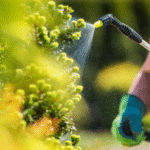They’re tall, elegant, and bright pink—but flamingos aren’t born that way. In fact, baby flamingos are fluffy and gray. So why do these birds turn pink? And what other secrets are hidden behind those long legs and graceful poses?
Let’s dive into the weird and wonderful world of flamingos with this colorful set of fun facts.
1. Flamingos Are Pink Because of What They Eat
The iconic pink color of flamingos comes from their diet, not their DNA.
These birds feed on algae, shrimp, and crustaceans rich in carotenoids—natural pigments also found in carrots and sweet potatoes. When flamingos digest these pigments, their bodies process and deposit them in their feathers, skin, and beak, giving them that signature pink hue.
Flamingos kept in zoos without a carotenoid-rich diet will lose their color and turn pale or white.
2. They’re Born Gray
When flamingos hatch, they look nothing like their parents. Baby flamingos are soft, round, and gray, with stubby little beaks. It takes several years for them to gradually develop their pink tones.
In the wild, this slow color change is one reason why flamingos rarely get confused with their young—they look completely different!
3. Flamingos Eat With Their Heads Upside Down
Yes, really.
Flamingos have a unique way of feeding. They dip their heads upside down in the water and use their specially adapted beaks to filter out algae and small animals.
Their beaks are shaped to work like a natural strainer, trapping food while pushing water and mud back out.
It’s a technique so unusual that no other bird feeds quite like this.
4. They Can Sleep on One Leg (And No One Really Knows Why)
One of the most iconic flamingo poses is the classic “one-legged stand”.
But why do they do it?
Scientists have a few theories:
- To conserve body heat, especially when standing in cold water
- To reduce muscle fatigue (flamingos can actually lock their legs in place to stay balanced effortlessly)
- Simply habit or instinct
Whatever the reason, flamingos are so good at it, they can even fall asleep standing on one leg.
5. Flamingos Live in Massive Colonies
Flamingos are extremely social birds and live in colonies that can number in the thousands, even up to a million individuals in some regions.
Living in large groups:
- Helps with protection against predators
- Improves chances of finding mates
- Synchronizes feeding and nesting behavior
It’s also why flamingo flocks are so visually striking—imagine thousands of pink birds all standing and moving together!
6. Not All Flamingos Are the Same
There are six species of flamingo, and not all of them are bubblegum pink. Some are pale, some are deep coral, and some have more white than pink in their feathers.
The six species are:
- Greater flamingo
- Lesser flamingo
- Chilean flamingo
- Andean flamingo
- James’s flamingo
- American flamingo
Color varies based on diet and location—but they’re all fabulous.
7. They Produce “Crop Milk” to Feed Their Babies
Flamingos, like pigeons and doves, produce a substance called crop milk—a high-fat, high-protein liquid secreted from the lining of their digestive tract.
Both males and females produce crop milk to feed their chicks. It’s bright red in color due to the pigments from their diet, and it plays a crucial role in early chick development.
Weird? Definitely. But also amazing.
8. They’re Surprisingly Strong Flyers
Despite their awkward walking style and long necks, flamingos are strong and efficient fliers. They can reach speeds of 35 to 40 mph (56–64 km/h) and fly hundreds of miles during migration or when searching for new habitats.
In the air, they stretch their necks out straight and flap continuously—making them look like elegant pink arrows across the sky.
9. Flamingos Have Been Around for a Long Time
Fossil records show that flamingo ancestors have existed for over 30 million years. Their ancient relatives had similar body structures and lived in similar watery environments.
That means flamingos have survived multiple climate shifts, geological changes, and ecosystem transformations.
In short, they’re not just beautiful—they’re tough survivors.
Final Thoughts: The Fabulous Life of Flamingos
From their upside-down eating habits to their shocking pink feathers and their ability to raise chicks with red “milk,” flamingos are far more than just pretty birds.
They’re social, adaptive, weird, and fascinating—proving once again that nature loves to get creative.
So next time you see a flamingo, remember: there’s a whole lot of strange science behind that fabulous look.



